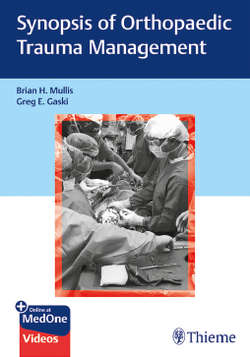Читать книгу Synopsis of Orthopaedic Trauma Management - Brian H. Mullis - Страница 21
На сайте Литреса книга снята с продажи.
I. Mechanism of Injury
ОглавлениеA. Blunt injuries
1. These are the results of a direct blow leading to a focal area of injury (▶Fig. 2.1).
2. This is the most common mechanism for open fractures.
B. Ballistic injuries
1. Determine between low- (i.e., handguns) and high- (i.e., military and hunting rifles) velocity injuries and high-mass injuries (close-range shotgun).
a. Low-velocity ballistic fractures often can be treated as closed fractures. Weak evidence for antibiotic prophylaxis in these injuries.
b. High-energy (high-velocity or high-mass) ballistic injuries are associated with significant soft tissue compromise and require surgical debridement.
Fig. 2.1 An example of an open tibia fracture sustained after a blunt injury mechanism.
C. Blast injuries
1. These are divided into three different types of injuries:
a. Primary: initial blast wave energy dissipated onto the body.
b. Secondary: fragments emitted from the explosive device lodge into the body.
c. Tertiary: resulting injury from victim being projected against ground or solid objects.
